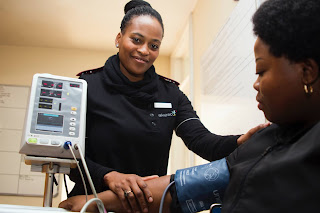Heart attack: signs that anticipate it
Heart attack or myocardial infarction, as it is correctly called in medical terms, is a medical emergency.
The term myocardial infarction defines necrosis or death of the heart muscle, due to the interruption of blood flow to an area of the heart muscle.
The heart muscle (myocardium) needs a constant supply of oxygen in order to function normally. Oxygen is supplied through the blood flowing through the coronary arteries, which irrigate the walls of the heart. In patients with coronary heart disease or ischemic heart disease, the coronary arteries narrow due to the presence of atheroma plaques (fat deposits on the walls of the coronary arteries), and the myocardium suffers due to insufficient oxygenation.
Annually, in Romania, over 15,000 people suffer a myocardial infarction. In Romania, only 40% of heart attack patients are treated in hospital in the first three hours after the onset of the heart attack, according to the Romanian Society of Cardiology.
How the heart attack occurs
Atheroma plaques are made up of fat, calcium, protein and inflammatory cells and vary in size. These atheroma plaques usually have a harder coating due to calcification, and a soft core. If the calcified coating of the plaque ruptures, bleeding occurs at this level, which attracts platelets here, the cells that try to stop the bleeding by forming a blood clot around them. If this blood clot completely clogs the artery, the heart muscle suffers from a lack of oxygen and a so-called heart attack occurs. More rarely, a heart attack occurs as a consequence of coronary vasospasm.
Symptoms that announce it
There are certain symptoms that are suggestive of myocardial infarction, especially if they occur in people with known ischemic heart disease or other cardiovascular conditions or risk factors for cardiovascular disease (hypertension, dyslipidemia, obesity, smokers, etc.). These symptoms are:
Feeling of chest discomfort, pressure, heaviness or pain in the chest or left arm. This sensation of pain may radiate to the back, jaw or arm.
Feeling of fullness, gastric discomfort, burning in the epigastrium, sweating, nausea, vomiting, dizziness, excessive weakness, anxiety, feeling of suffocation, palpitations with fast, regular or irregular rhythm. These symptoms last longer than 30 minutes and do not yield to the administration of a sublingual nitroglycerin tablet.
There are also situations when myocardial infarction does not manifest itself clinically. In this case, it is called a silent heart attack. It is felt relatively frequently by people with diabetes.
Infarct patients need emergency treatment
It increases the chances of survival. The faster the diagnosis is made, the faster it can be intervened. Ideally, this medical intervention should take place in the first two hours after the onset of the heart attack. Blood pressure in the case of a heart attack is variable, although in many cases there is a tendency to hypertension if cardiogenic shock does not develop.
Necessary investigations
In addition to the patient's examination, paraclinical tests are required for the diagnosis of myocardial infarction. These include electrocardiogram, cardiac ultrasound, blood tests (determination of cardiac enzymes, which grow in the blood after a heart attack), coronary angiography. The latter is an interventional method that can directly visualize the infarction site and the atheroma plaque responsible for the infarction. At the same time, coronary angiography allows the doctor to insert a stent at the site of occlusion, a stent that keeps the coronary artery open and allows the restoration of blood flow at this level.









No comments :
Post a Comment